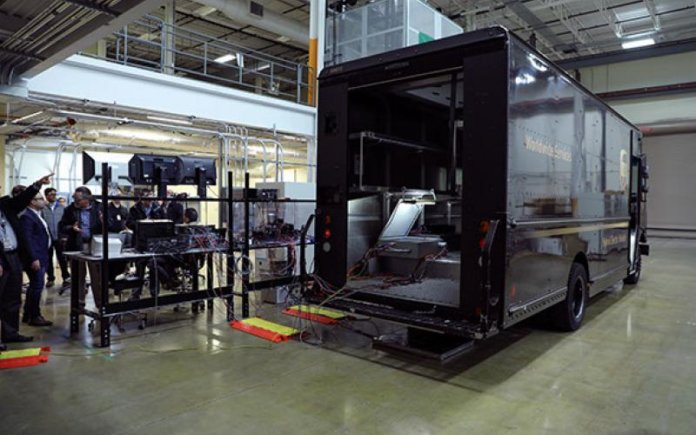Researchers at the Department of Energy’s Oak Ridge National Laboratory (ORNL) have demonstrated a 20 kW bi-directional wireless charging system installed on a UPS medium-duty, plug-in hybrid electric delivery truck.
The project is the first of its kind to achieve power transfer at this rate across an 11-inch air gap, advancing the technology to a new class of larger vehicles with higher ground clearance.
ORNL’s wireless charging technology transferred power between the truck and a charging pad across the 11-inch gap using two electromagnetic coupling coils at the demonstration. The system transferred electricity from the power grid to the vehicle battery terminals at more than 92% efficiency.
At a 20 kW level, it would take about three hours to charge the vehicle’s 60 kWh battery packs. Conventional wired charging typically takes between five to six hours using the existing onboard charging system.
With its bi-directional design, the system also supports use of the vehicle’s batteries for energy storage. Doing so would give energy flexibility to a fleet owner’s business, and help better manage on-site generation such as solar power. ORNL’s bidirectional technology is fully compliant with grid power quality standards.
“Scaling the technology to a fleet of 50 trucks gives you MW-scale energy storage,” says Omer Onar, who led ORNL’s laboratory team.
The technology takes energy from the grid and converts it to direct current (DC) voltage. Then a high-frequency inverter generates alternating current (AC), which in turn creates a magnetic field that transfers power across the air gap. Once the energy is transferred to the secondary coil across the air gap it is converted back to DC, charging the vehicle’s battery pack.
Oak Ridge researchers first demonstrated a 20 kW wireless charging system on a light-duty passenger vehicle in 2016. The technology for light-duty applications has since been scaled up to 120 kW, advancing the goal of wirelessly charging a typical consumer’s electric vehicle in about the same time as a gas station fill-up.
The technology is undergoing further testing and analysis as part of the project, which is supported by the DOE Office of Energy Efficiency and Renewable Energy’s Vehicle Technologies Office.
For more information on ORNL’s bi-directional wireless charging systems, click here.
Photo: ORNL’s UPS demonstration





